The cheeky chirp and amusing antics of our feathered friends can make any yard a pleasure to sit in and enjoy a glass of something cold. Bird feeders are a great way of enticing these airborne guests to rest their wings and chill for a while. However, they also have some rather sneaky downsides that can make you rethink putting them in your yard. Although it may feel like a philanthropic and rewarding act, ensuring your yard is seen as an avian fast food joint by the frequent fliers in your neighborhood can do more harm than good.
To maintain all that energetic flapping, flying, squawking, and singing, birds require a lot of food. Yet, don’t believe feeders in your yard are the best solution. Their presence can not only attract unwelcome critters such as bears to the table, but they can be detrimental to the well-being of birds. Not only can they contribute to the spread of both avian and human diseases, but bird feeders can also have an adversely negative effect on various species of birds. Additionally, they’re seen as a ready-made hunting ground for predators, and in the long run, bird feeders can be costly and time-consuming to maintain. No one wants their yard to be a bird-free zone, but it’s worth familiarizing yourself with the downsides of hanging a bird feeder in your yard.
They attract unwanted guests
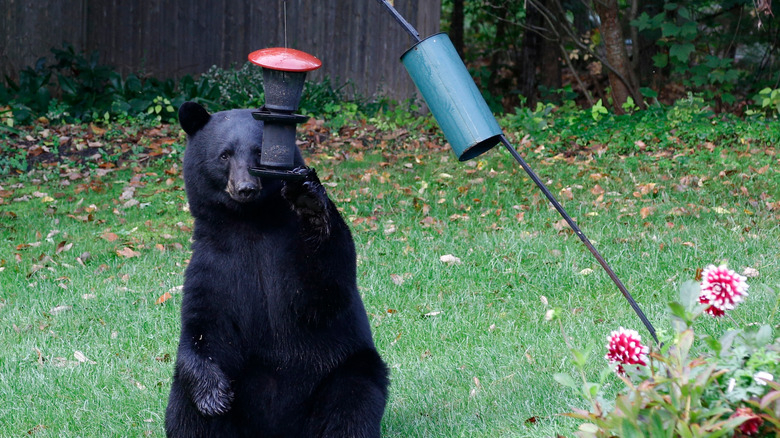
A little wildlife in the yard can make you feel like you’re stepping into the great outdoors whenever you open your back door. However, there’s a big difference between the occasional sighting of a shy and retiring hedgehog as opposed to a big bear getting up close and personal. Bird feeders are well-known for attracting rodents such as mice, squirrels, and rats, but depending on where you live, you can also attract chipmunks, raccoons, and even bears. Although they might appear self-contained and dainty, all culinary decorum goes out of the window when birds feast. At times they scatter as much seed on the ground as they eat, and this is all the invitation that mice need to come and join the party.
Mice, rats, and squirrels are also good climbers and capable of jumping on and into the feeders themselves. However, those are the least of your problems if you live in bear country. If you do, you need to keep in mind bird feed is often considered a gateway food for bears. It’s more common for black bears to crash into people’s yards in search of feeders, but grizzlies have also been spotted. The bears’ keen sense of smell is attracted to the amount of calorie-rich food stored in feeders. Once they’ve found a reliable source, they will keep returning. Wildlife officials recommend it’s best to forget about feeders if you live in bear country. Or at the very least, only hang them out during hibernation season.
They can attract the wrong sort of birds
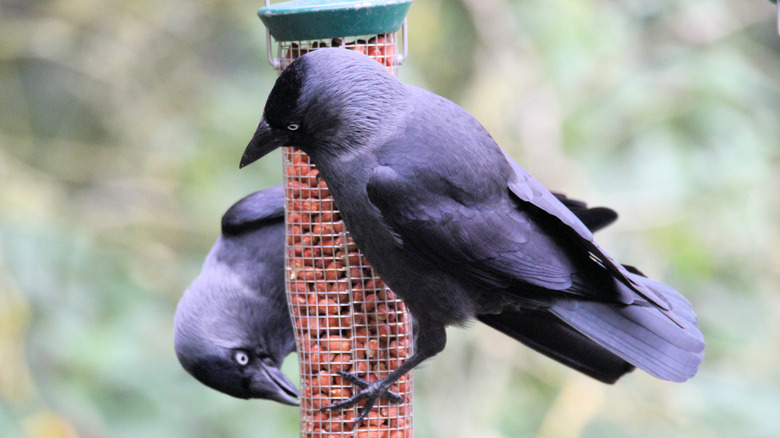
When you break it down, the feeders in your yard serve one primary function — to attract birds! While they’re extremely effective at their job and can draw everything from goldfinches to hummingbirds, they can also throw open the doors to the sort of birds you wouldn’t want anywhere near your yard, such as crows. Menacing and imperial, crows are a bit like the Darth Vader of the avian world. There’s a time and a place for these regal and otherworldly birds, but your yard ain’t it!
Crows usually roam in crowds and tend to bully a solitary songbird off the feeder as they gorge on your carefully selected seeds en masse. They’re capable of devouring everything in a matter of minutes and level little in the way of leftovers for any bird they haven’t scared off with their antics. Once crows have locked in on your yard as a feeding source, there’s no chance of them moving on. Instead of the colors and charm that a hypnotic hummer might bring to your yard, you’re left with a murder of crows, squawking, strutting, and making your yard their stomping ground. In such instances, it may be time to hang up the bird feeder instead of hanging it out.
Bird feeders can have a negative effect on the population levels of some species
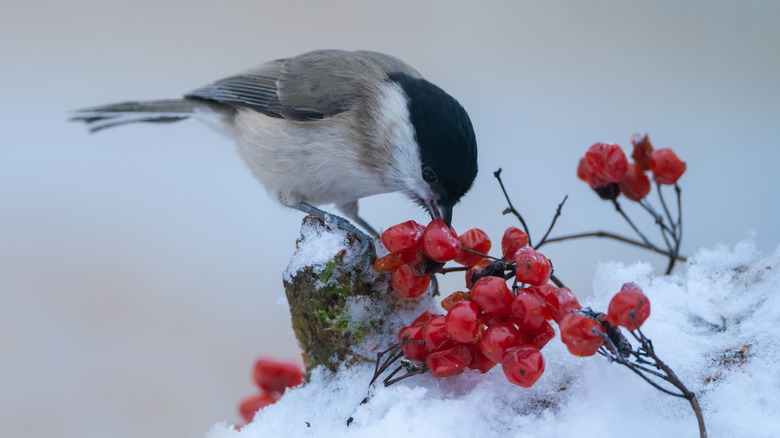
Schnuddel/Getty Images
If you didn’t love the company of birds, you wouldn’t put feeders in your yard. Here’s the bad news: Instead of helping them with their daily dose of nutrition, feeders can have quite a detrimental effect on the population level of some species. The intentions behind bird feeders are solid enough. They’re a great way to connect with nature and observe our feathered friends in action. They are also seen as a way of compensating for all the natural habitats and feeding grounds we have infringed upon. However, Scientific American reports that bird feeders could upset the balance between bird species and changing ecosystems.
Conservation ecologist Jack Shutt explained, “If you’re dumping millions of tons of additional nonnatural resources into an environment, you’re going to get massive, massive impacts. And they’re not always going to be the ones that you’re expecting.” In the U.K., data indicates that in the last 25 years, aggressive birds such as Great Tits and Eurasian Nuthatches who favor feeders have seen their numbers soar, while species that avoid feeders — such as the Marsh Tit and Wood Warblers — have declined significantly. Oregon State University ecologist James Rivers points out that in the U.S., we do not yet have the long-term and comprehensive data to fully study the effects of bird feeders on American species. But as ornithologist Alexander Lees points out, “You can’t simply pour resources into a system and not expect these cascading effects.”
They can be expensive and time-consuming to maintain
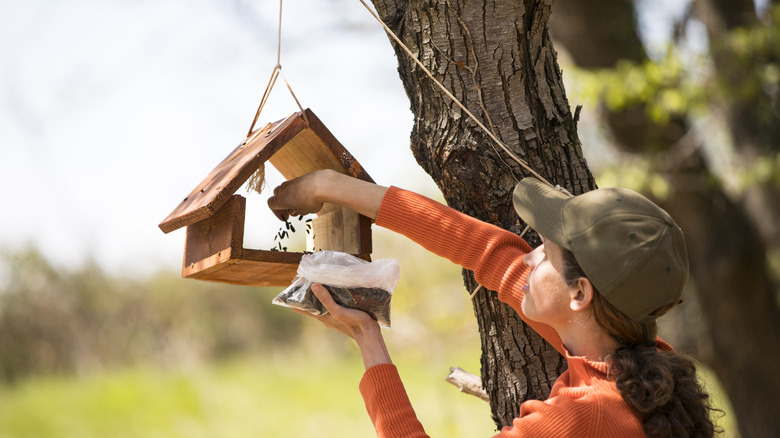
Kmatija/Getty Images
When push comes to shove, sometimes you just have to think practically. One of the biggest problems with bird feeders is their often costly price tag and their required levels of upkeep. Bird feeders aren’t something you can simply buy, hang in the yard, and forget about. They need constant cleaning and restocking if you want them to work in the manner they’re designed for, and more importantly, to keep them safe for visiting birds. All of which takes both time and money.
Birds can be messy and leave droppings where they eat. These droppings must be cleaned frequently to prevent contaminating the food supply. And it’s not just bird droppings you’ll have to contend with, but those of rodents as well. And having a feeder so clean you could eat your dinner off of it is no good if you haven’t got plenty of seed for those hungry little fliers. Once you start letting the local bird population know it’s a free buffet at your yard all year round, you better keep those supplies well stocked. Here’s where it starts getting expensive. Bird seed is not getting any cheaper, so be prepared to be out of pocket if you want to fully commit to feeding birds all year round.
They can cause weeds to grow in your yard
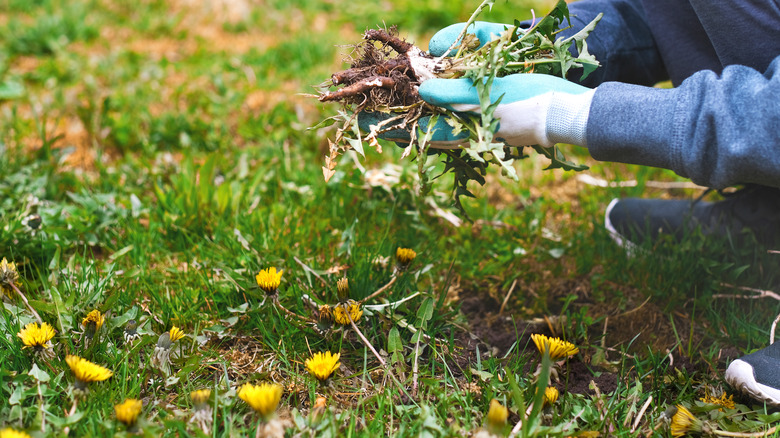
VisualArtStudio/Shutterstock
The sight and sound of birds can effortlessly complement the aesthetic and atmosphere of your yard. However, their presence also has the potential to make a complete mess of your special place. As we have already established, birds are messy eaters. They tend to take a dive-and-grab approach to meal times. Commercial bird seed is also rife with many fillers to bulk it out, such as red millet and sorghum. Birds have a habit of picking these out and discarding them. The downside of all this is that a lot of that seed in your feeders bypasses the birds’ beaks and bellies and ends up scattered across your yard. This can spell big trouble if it gets anywhere near your lawn.
Bird seed is problematic in a well-kept lawn because it has a habit of sprouting and leaving some lovely weeds that can spread like wildfire. In next to no time, where once there was lush, green, well-bred, and exquisitely manicured grass, you’ll now have an ill-mannered and loutish army of weeds to contend with. If you want the sort of lawn you can play crotchet on but don’t need the hassle of any extra weeding, perhaps bird feeders are not for you. Additionally, bird seed can attract its share of other lawn-destroying critters to your yard, such as moles, voles, and rats.
They act as a convenient stalking ground for predators
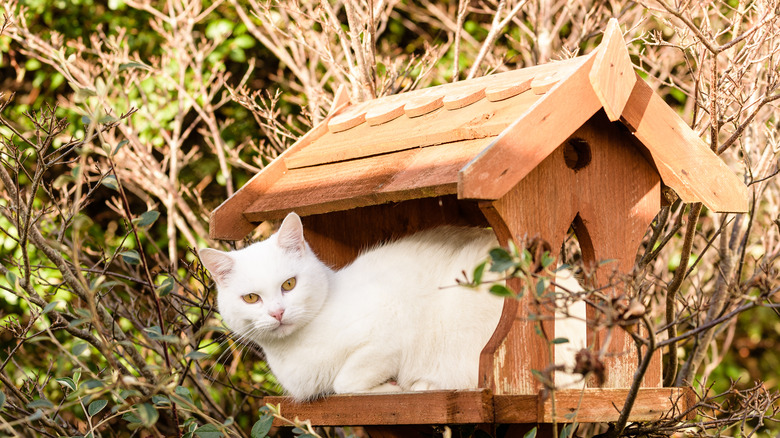
Christopher Willans/Shutterstock
When you’re busy watching a bird taking its fill on your feeder, you’re probably not alone. Chances are there’s another pair of eyes somewhere in the vicinity studying the bird and waiting for the opportunity to pounce. Bird feeders don’t just attract our feathered friends; they are also seen as ready-made hunting grounds for predators. Cats have long exploited the fact that when a bird is feeding, their guard is down, and use it as a chance to strike. However, according to Scientific American, a study by Ohio State University revealed that bird feeders could also be attracting nest predators to the area they’re located in.
Researcher Jennifer Malpass explained, “On the one hand, you could see that the food (seed) might be attracting predators to certain areas, and that could increase nest predation risk.” However, she added that predators might also become reliant on such human-provided foods, “and that could perhaps lessen nest predation risk.” But this wouldn’t necessarily be a good thing because predators help bring balance to natural population levels. Over four years, it was found that in neighborhoods where bird feeders were prominent, predatory birds such as crows were abundant, and the nest survival of American robins had declined. It can disrupt the balance of things.
They can help spread avian diseases
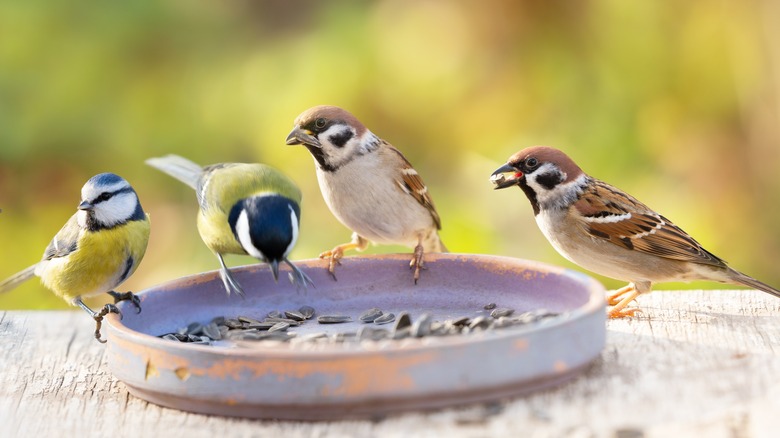
Nitr/Shutterstock
Any place where large numbers of various species gather to eat daily has the potential to fall foul of the sort of bacteria that can help spread disease, and bird feeders are no different. Scientific American reports that in 2005, an outbreak of dove trichomoniasis that infected and killed half a million European Greenfinches was believed to have been started by bird feeders in the U.K. Salmonella is another common disease associated with feeders that, according to ornithologist Alexander Lees, is “a recipe for disaster.” He explained, “You’ve got different species pecking at the same bit of plastic, which is covered in various bird bodily fluids.”
The bird food industry in the U.S. alone is worth $5 billion annually. Ornithologists have described it as a “massive supplementary feeding experiment.” It is triggering avian diseases, altering migratory behavior, and boosting the numbers of predators and invasive species in ways that have yet to be fully understood. Associate professor of wildlife disease at the University of Georgia, Sonia Hernandez, explained to PBS that feeders cause many species to interact in ways they never would in the wild. As different birds have evolved differently, they can be vastly susceptible to novel pathogens they haven’t had much experience with. Hernandez added, “From the standpoint of disease acquisition and transmission, having a high density of diverse species that are not related is a kind of recipe for disaster.”
They can carry health risks for humans

nimito/Shutterstock
As well as posing considerable health risks to the birds they’re designed to help, feeders can also make you ill. The New York Times reported in 2024 that feeders were responsible for a salmonella outbreak that spread across eight states and infected 19 people, eight of whom were hospitalized. Three of the cases were in California. During the same period, the state’s Department of Fish and Wildlife had been “inundated with calls” by residents informing them of a high number of dead or diseased finches found at feeders.
Bird feeders require a rigorous level of cleaning and maintenance. When the food is left to rot, it is, alongside bird poop, a perfect breeding ground for bacteria. This bacteria can be spread among the visiting bird population, from feeder to feeder, and from feeder to human. When the food is eventually replaced or the feeder cleaned, this bacteria can be transmitted by simply failing to wear gloves or forgetting to wash hands. The Centers for Disease Control and Prevention advises to clean bird feeders at least once a week. They also stress to clean your hands thoroughly with soap and water after touching one.
Ways to feed birds without feeders
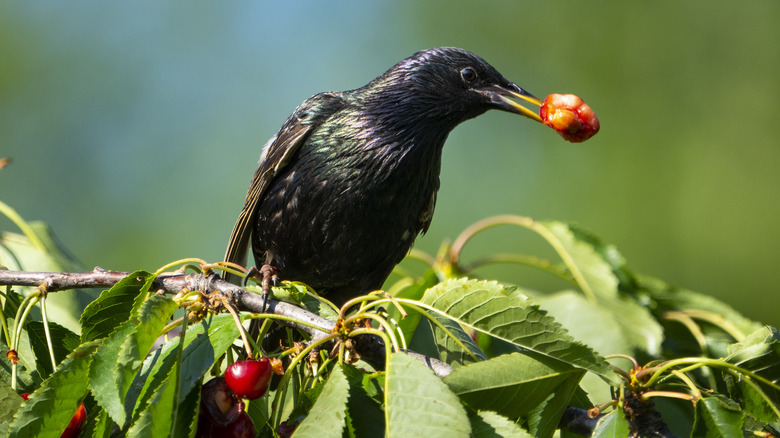
Lasalle-photo/Getty Images
As we’ve discovered, there are an awful lot of sneaky downsides to putting bird feeders in your yard, and you may feel completely discouraged from hanging one ever again. However, this doesn’t mean you must stop feeding the birds completely. As ornithologist and conservationist Steve Kress explained to WIRED, we just need to construct things a little differently. He explained, “If we can shift people from thinking about feeding birds to thinking about mimicking habitat, then we’re really doing something good for birds.”
Kress stresses that the secret to helping birds is to ensure your yard has a rich variety of food and materials for nesting. If you’ve got the space, he recommends planting a rich variety of trees and shrubs that will allow the birds to nest and provide them with a diet of protein-rich insects. He said, “These are powerhouse food for birds and you don’t get them from bird feeders. You get them from insects that are feeding on the leaves of native plants.” In addition, plants such as cornflowers, coneflowers, milkweed, sunflowers, marigolds, asters, and black-eyed Susan will all provide the birds with some of their favorite seeds. Virginia creeper, staghorn sumac, blackberry, blueberry, and raspberry are also great plants to entice berry- and fruit-eating birds into your yard. Ditching those feeders and getting naturally creative might just be the best thing in the long run for you and the birds!




